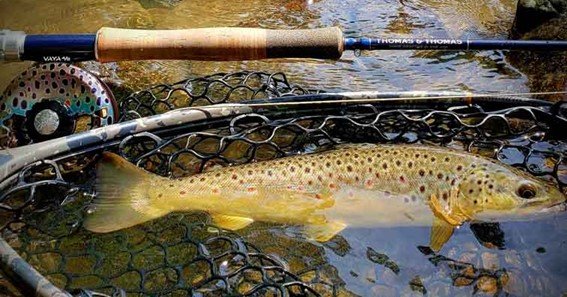When choosing the best weight for backing in fly fishing, it is essential to consider several factors, including the species you’re targeting, the environment, and your fly line setup. The backing is crucial for providing extra line capacity when a fish makes a long run, especially when the flying line alone is insufficient.
1. Backing Weight by Fish Species
- Trout and Small Freshwater Fish: For smaller species like trout, a 20 lb. Dacron backing is typically sufficient. It provides the right balance of strength and capacity for most freshwater reels, especially when you expect the fish to make.
- Larger Freshwater Species (Bass, Pike): A 30 lb. backing is recommended for larger freshwater species, as it offers additional strength and durability to handle bigger fish that might make powerful runs.
- Saltwater Species (Bonefish, Redfish, Tarpon): For saltwater fishing, where fish tend to be larger and stronger, 30 lb. to 50 lb. Gel-Spun backing is ideal. Gel-Spun has a thinner diameter and higher strength, allowing you to fit more backing onto your reel, which is crucial for handling the long runs typical of saltwater fish.
2. Backing Material Options
- Dacron: Dacron is the most commonly used backing material. It is affordable, strong, and has a bit of stretch, which is useful for beginners and prevents sudden line breakages. A 20 lb. or 30 lb. Dacron is suitable for most freshwater species.
- Gel-Spun Polyethylene (GSP): Gel-Spun is a more advanced, stronger material with less stretch than Dacron. It is ideal for saltwater fishing because of its thin diameter and high strength, making it possible to spool more lines on your reel. However, it can be more expensive and less forgiving on knots.
3. Fly Line Weight Compatibility
Your backing weight should also match your fly line weight. For example:
- A 5-weight fly line typically pairs well with 20 lb. Dacron.
- For heavier lines like 8-weight and above, consider using 30 lb. or higher backing, particularly for larger or more aggressive fish.
4. Backing Length
- Small Trout or Panfish: Typically, 50 to 100 yards of 20 lb. backing is enough.
- Larger Species (Bonefish, Salmon): For saltwater or larger freshwater species, you’ll need 200 to 300 yards of 30 lb. or higher backing.
Conclusion
Determining the best weight for backing in fly fishing depends on your fishing goals, target species, and reel capacity. Heavier backing, such as 30-pound test, is ideal for larger species like salmon or tarpon, while 20-pound test is sufficient for trout or bass. Always consider the reel’s capacity and your specific fishing environment to ensure a seamless experience. With the right backing weight, you’ll be prepared to handle long runs and maximize your fly fishing success. Happy fishing!
FAQ
1. What is the best weight for backing trout fishing?
For trout, 20 lb. Dacron backing is typically sufficient, offering a good balance of capacity and strength for small freshwater species.
2. Should I use Gel-Spun or Dacron backing for saltwater fishing?
Gel-Spun is recommended for saltwater species because it is stronger and has a thinner diameter, allowing you to spool more backing.
3. How much backing do I need for bass or pike?
A 30 lb. backing is ideal for bass or pike, offering additional strength to handle larger fish without breaking.
4. How do I choose the right backing weight for fly fishing?
Consider the species you’re targeting and the size of your fly line. For lighter lines (5-weight and below), 20 lb. backing is ideal. For heavier lines, 30 lb. or higher is recommended.
5. How much backing should I spool onto my reel?
For trout and smaller species, 50-100 yards is usually enough, while saltwater species like bonefish may require 250-300 yards of backing.










